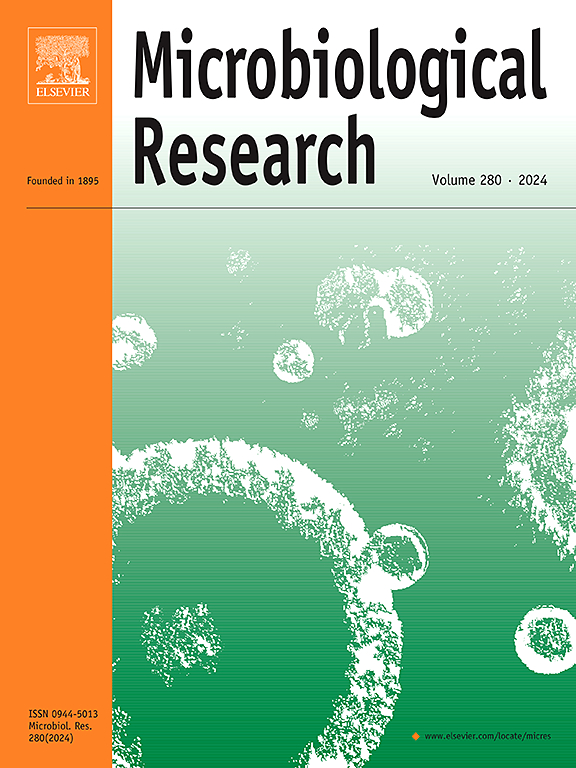青藏高原土壤微生物群在维持草原生态系统健康中的作用
IF 6.1
1区 生物学
Q1 MICROBIOLOGY
引用次数: 0
摘要
土壤微生物作为植物-土壤相互作用的中介,与草地生态系统植物健康密切相关。近年来,青藏高原高寒草地出现了不同程度的退化。解决草地退化问题,特别是在气候变化的影响下,是一项全球性挑战。了解青藏高原草地退化的驱动因素并制定适当的缓解措施对这一脆弱生态系统的未来可持续性至关重要。本文综述了影响草地退化的环境和人为因素及其对土壤微生物群落结构的影响。综述了青藏高原微生物群落的研究现状,重点介绍了植被、气候变化、放牧和土地利用对高寒草地微生物群落的影响。这些研究结果表明,微生物介导的土壤生物过程是草地生态系统功能恢复的重要驱动力。因此,深入了解高寒草原土壤微生物群的空间分布特征是必要的,这就需要综合评价气候因子、植被特征和人类活动三者之间的相互作用。此外,我们评估和总结了土壤微生物组技术在可持续农业中应用的当前技术发展和前景,包括:(i)单菌种接种,(ii)合成微生物群落接种,(iii)微生物群落移植。在实施草地恢复工程时,应认识到每一项恢复措施对土壤微生物活性的影响都是独特的。我们建议通过采用先进的微生物组技术和整合以微生物为基础的可持续农业实践来实现高寒草地生态系统的可持续发展,从而最大限度地提高草地生物量,增加土壤碳,优化土壤养分循环。本文章由计算机程序翻译,如有差异,请以英文原文为准。
Roles of the soil microbiome in sustaining grassland ecosystem health on the Qinghai-Tibet Plateau
Soil microbes, as intermediaries in plant-soil interactions, are closely linked to plant health in grassland ecosystems. In recent years, varying degrees of degradation have been observed in the alpine grasslands of the Qinghai-Tibet Plateau (QTP). Addressing grassland degradation, particularly under the influence of climate change, poses a global challenge. Understanding the factors driving grassland degradation on the QTP and developing appropriate mitigation measures is essential for the future sustainability of this fragile ecosystem. In this review, we discuss the environmental and anthropogenic factors affecting grassland degradation and the corresponding impacts on soil microbe community structure. We summarize the current research on the microbiome of the QTP, in particular the effect of vegetation, climate change, grazing, and land use, respectively on the alpine grassland microbiome. The results of these studies indicate that microbially mediated soil bioprocesses are important drivers of grassland ecosystem functional recovery. Therefore, a thorough understanding of the spatial distribution characteristics of the soil microbiome in alpine grasslands is required, and this necessitates an integrated approach in which the interactions among climatic factors, vegetation characteristics, and human activities are evaluated. Additionally, we assess and summarise current technological developments and prospects for applying soil microbiome technologies in sustainable agriculture, including: (i) single-strain inoculation, and (ii) inoculation of synthetic microbial communities, (iii) microbial community transplantation. Grassland restoration projects should be carried out with the understanding that each restoration measure has a unique effect on the soil microbial activity. We propose that the sustainable development of alpine grassland ecosystems can be achieved by adopting advanced microbiome technologies and integrating microbe-based sustainable agricultural practices to maximise grassland biomass, increase soil carbon, and optimise soil nutrient cycling.
求助全文
通过发布文献求助,成功后即可免费获取论文全文。
去求助
来源期刊

Microbiological research
生物-微生物学
CiteScore
10.90
自引率
6.00%
发文量
249
审稿时长
29 days
期刊介绍:
Microbiological Research is devoted to publishing reports on prokaryotic and eukaryotic microorganisms such as yeasts, fungi, bacteria, archaea, and protozoa. Research on interactions between pathogenic microorganisms and their environment or hosts are also covered.
 求助内容:
求助内容: 应助结果提醒方式:
应助结果提醒方式:


